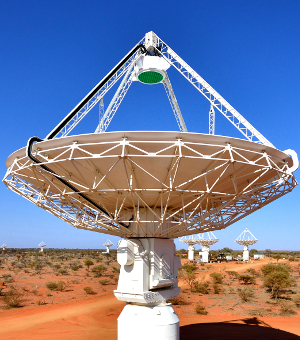SKAO to suffer satellite noise
 SpaceX's Starlink satellites are posing a threat to radio astronomy.
SpaceX's Starlink satellites are posing a threat to radio astronomy.
Scientists have discovered that SpaceX's Starlink internet satellites are emitting unintended radiation that interferes with radio astronomy observations.
The research, conducted using the Low Frequency Array (LOFAR) telescope in the Netherlands, has revealed a new and unexpected source of disruption in the form of electromagnetic radiation emitted by the satellites' onboard electronics.
Previously, the astronomy community expressed concerns about megaconstellations like Starlink obstructing telescopic observations and causing light pollution.
The new study unveils the additional challenge posed by radiation emitted in the same frequencies that radio telescopes are designed to detect. The researchers detected this unwanted low-frequency radio hum from nearly 50 Starlink satellites, including the protected radio astronomy band allocated by the International Telecommunications Union.
The discovery is particularly concerning for the Square Kilometre Array Observatory (SKAO), a next-generation radio observatory being constructed in Australia and South Africa.
Strict regulations establish radio-quiet zones around the SKAO sites, prohibiting terrestrial radio and TV transmissions. However, satellite constellations like Starlink can freely traverse these areas due to their low altitude, disrupting sensitive observations.
While SpaceX adheres to current regulations since this type of radiation is not covered, the findings emphasise the need for clear guidelines to protect radio astronomy bands from unintended interference.
The researchers conducted simulations that demonstrated the increasing impact of larger satellite constellations on radio astronomy.
Lead author Federico Di Vruno, a spectrum manager for SKAO, stressed the importance of understanding satellite constellations' impact on radio astronomy and expressed optimism about collaboration with satellite operators to find solutions.
SpaceX says it has already begun discussions to mitigate the unintended emissions and has introduced changes to its next-generation satellites.
The authors hope that other operators will follow SpaceX's example, and regulations will be developed to protect radio astronomy from these disruptive effects.
The full study is accessible here.







 Print
Print